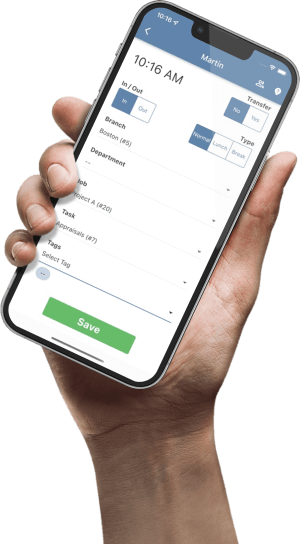Free Washington Payroll Tax Calculator

How to Use the Washington Payroll Tax Calculator
Verify Location: Ensure “United States” is selected for the country and “Washington” for the state.
Federal Information:
- Choose your “Federal Filing Status” (e.g., Single, Married).
- Enter the number of “Federal Allowances” you are claiming.
State Information:
- Choose your “State Filing Status.”
- Enter the number of “State Allowances” you are claiming.
Pay Frequency: Select your “Annual Pay Periods” (e.g., Bi-Weekly (26)).
Gross Pay: Enter your “Gross Wage / Pay Period” (the amount you earn before taxes).
Pay Date: Select the “Pay Date.”
Calculate: Click the “Calculate” button.
Review Results: The calculator will display your estimated net pay and tax withholdings.
Found our Free Washington Payroll Tax Calculator useful? Bookmark and share it.

What is Payroll?
In simple terms, “payroll” refers to the payments you make to your employees for the work they perform. However, it’s much more than just writing a check. Payroll involves a complex system of tracking, reporting, and remitting payments to various state and federal agencies. This includes:
- IRS (Internal Revenue Service): For federal income tax withholding, Social Security, and Medicare taxes.
- Social Security Administration: For reporting employee earnings for Social Security benefits.
- Washington Employment Security Department: For state unemployment taxes.
- Washington Department of Labor & Industries: For workers’ compensation insurance.
Essentially, payroll encompasses all the financial and administrative tasks related to compensating your workforce while adhering to legal requirements.
Do I Need to Run Payroll?
If you hire individuals to work for your business in Washington, chances are you need to establish a payroll system. Most workers are legally considered “employees,” not independent contractors. This includes:
- Temporary workers (unless hired through a payroll-handling temp agency).
- “Casual labor” and many “1099 workers.”
- Friends, relatives, or anyone receiving monetary compensation for their work.
- Many independent contractors (who must meet strict criteria to be exempt).
It’s crucial to understand that simply labeling someone an “independent contractor” doesn’t automatically exempt you from payroll responsibilities. You have the burden of proof to demonstrate that a worker is not an employee.
Key Agencies and Laws Affecting Payroll Tax Responsibilities:
- U.S. Internal Revenue Service (IRS): Determines your obligations for Social Security, Medicare, income tax withholding, federal unemployment taxes, and W-2 reporting.
- Department of Labor & Industries: Oversees workers’ compensation insurance requirements.
- Employment Security Department: Handles state unemployment tax responsibilities.
- Paid Family and Medical Leave: Manages contributions and compliance for this program.
- WA Cares Fund: Defines contribution requirements and benefit eligibility.
Can I Handle Payroll Myself, or Do I Need a Professional?
While the calculations involved in payroll aren’t inherently complex, the administrative burden is significant. Accurate record-keeping, timely filings, and staying up-to-date with ever-changing regulations can be time-consuming.
Consider this: even hiring just one employee early in the year can result in completing approximately 18 forms, not to mention the ongoing responsibility of maintaining accurate records.
Many businesses opt to outsource payroll to:
- Bookkeepers
- Accountants
- Payroll service providers
This allows business owners to focus on core operations while ensuring compliance.
Your Payroll Reporting and Tax Responsibilities in Washington
As an employer in Washington, you have several crucial payroll reporting and tax responsibilities. Understanding and fulfilling these obligations is essential for compliance and avoiding penalties. Here’s a comprehensive overview, organized by the timing of required actions:
W-4 Form (Employee's Withholding Certificate)
- Purpose: This form, completed by the employee, provides essential information for determining the correct amount of federal income tax to withhold from their paycheck.
- Action: Employers must ensure employees complete a W-4 form upon hiring and keep it on file. Employees can update their W-4 at any time.
- Agency: U.S. Internal Revenue Service (IRS)
I-9 Form (Employment Eligibility Verification)
- Purpose: This form verifies an employee’s identity and authorization to work in the United States.
- Action: Both the employee and employer must complete the I-9 form within three days of the employee’s start date. Employers must keep the form on file.
- Agency: U.S. Department of Homeland Security
Employee Paid Sick Leave Notification Form
- Purpose: This form notifies employees of their rights and entitlements to paid sick leave under Washington state law.
- Action: Employers must provide this notification form to employees at the time of hire. Both the employer and employee should retain a copy.
- Agency: Washington State Department of Labor & Industries (L&I)
New Hire Reporting
- Purpose: This reporting helps agencies track child support obligations and share new hire information with relevant departments.
- Action: Employers must report new hires or rehires within 20 days of the hire date. This can be done online, by fax, or by phone.
- Agency: Washington State Department of Social & Health Services (DSHS)
IRS Electronic Federal Tax Payment System (EFTPS)
- Purpose: EFTPS is the system used to pay federal payroll taxes electronically.
- Action: Employers must enroll in EFTPS to make federal tax payments.
- Agency: U.S. Internal Revenue Service (IRS)
IRS Form 941 (Employer's Quarterly Federal Tax Return)
- Purpose: This form reports employee wages, federal income tax withheld, and employer and employee Social Security and Medicare taxes.
- Action: Employers must file Form 941 quarterly, with deadlines on April 30, July 31, October 31, and January 31. Payments are made through EFTPS.
- Agency: U.S. Internal Revenue Service (IRS)
Workers’ Compensation Premium Report
- Purpose: This report and payment cover workers’ compensation insurance, providing benefits for employees injured on the job.
- Action: Employers must file and pay premiums quarterly online through L&I’s website, with deadlines on April 30, July 31, October 31, and January 31.
- Agency: Washington State Department of Labor & Industries (L&I)
State Unemployment Tax Report
- Purpose: This report and payment fund unemployment benefits for eligible workers.
- Action: Employers must file and pay state unemployment taxes quarterly online through the Employment Security Department’s website, with deadlines on April 30, July 31, October 31, and January 31.
- Agency: Washington State Employment Security Department (ESD)
Paid Family and Medical Leave Report
- Purpose: This report and payment support the state’s Paid Family and Medical Leave program.
- Action: Employers must file and pay contributions quarterly online through the Paid Leave website, with deadlines on April 30, July 31, October 31, and January 31.
- Agency: Washington State Employment Security Department (ESD)
IRS Form 940 (Employer's Annual Federal Unemployment Tax Return)
- Purpose: This form reports and pays federal unemployment taxes.
- Action: Employers must file Form 940 annually by January 31 of the following year. Payments are made through EFTPS.
- Agency: U.S. Internal Revenue Service (IRS)
IRS Form W-2 (Wage and Tax Statement)
- Purpose: This form reports employee wages and withholdings for the year.
- Action: Employers must provide copies of Form W-2 to employees by January 31 of the following year and file the original with Form W-3 to the Social Security Administration by February 28.
- Agency: U.S. Internal Revenue Service (IRS) and Social Security Administration
IRS Form W-3 (Transmittal of Wage and Tax Statements)
- Purpose: This form summarizes the information from all employee W-2 forms.
- Action: Employers must file Form W-3 with the Social Security Administration along with copies of employee W-2 forms by February 28.
- Agency: U.S. Internal Revenue Service (IRS) and Social Security Administration

Key Responsibilities at a Glance
| Requirement | Purpose | Action | Agency |
|---|---|---|---|
| W-4 Form (completed by employee prior to first payroll; new forms can be completed at any time) | Needed for employee information and to determine federal income tax withholding | Keep on file | U.S. Internal Revenue Service |
| I-9 (completed by both employee & employer within 3 days of hire) | Needed to provide proof of an employee’s eligibility to work in the U.S. | Keep on file | U.S. Dept. of Homeland Security |
| Employee Paid Sick Leave Notification form (completed by employee and employer at hire) | Required to provide notice of employee's entitlement to paid sick leave | Give copy to employee and keep copy on file | WA Dept. of Labor & Industries |
| New Hire Reporting (completed by employer within 20 days of hire or rehire) | Agency determines if employee has a child support case and also shares new hire information with Employment Security and Labor & Industries | Online, fax to DSHS (800-782-0624) or call in to DSHS (800-562-0479) | WA. Dept. of Social & Health Services |
| IRS Electronic Federal Tax Payment System (EFTPS) | Need account to pay federal taxes. | Set up account | U.S. Internal Revenue Service |
| Workers’ compensation premium report | Workers’ compensation insurance for medical costs and wage replacement if injured on the job. | Complete and pay online at www.lni.wa.gov (due 4/30, 7/31, 10/31, 1/31) | WA Dept. of Labor & Industries |
| State unemployment tax report | Unemployment benefits for employees who lose their jobs. | Complete and pay online at esd.wa.gov (due 4/30, 7/31, 10/31, 1/31) | WA Employment Security Dept. |
| Paid Family and Medical Leave report | Paid leave for employee to care for themselves or their family | Complete and pay online at paidleave.wa.gov (due 4/30, 7/31, 10/31, 1/31) | WA Employment Security Dept. |
| IRS Form 940 – Employer’s Annual Federal Unemployment Tax Return | Pays for administration of the national unemployment insurance program | Send form to IRS by mail and transmit payment using IRS online system by 1/31 for the preceding year | U.S. Internal Revenue Service |
Data Retrieved From: https://www.business.wa.gov/

Maintaining Accurate Payroll Records: A Guide for Washington Employers
Maintaining meticulous payroll records is not just good practice; it’s a legal requirement. Numerous government agencies, including the IRS, Department of Labor & Industries (L&I), and the Employment Security Department (ESD), have the authority to audit your records. Failure to produce adequate documentation can lead to estimated tax assessments and hefty penalties.
Retention Requirements:
While different agencies may have varying retention requirements, a general rule of thumb is to retain payroll records for at least six years. This ensures you can adequately respond to any audits or inquiries.
Essential Payroll Records:
Here’s a comprehensive list of the payroll records you should create and maintain:
1. Employee Information:
- Full name
- Hire date
- Job title and duties
- Current address
- Social Security number
- Dates of job changes (promotions, transfers, etc.)
- Termination date (if applicable)
2. W-4 Forms:
- A completed W-4 form for each employee, kept on file.
3. Pay Rate Information:
- The employee’s pay rate (e.g., hourly wage, monthly salary).
4. Basis of Pay:
- How the employee is paid (e.g., hourly, monthly, commission, bonus, piece rate).
5. Timesheets:
- Detailed timesheets showing:
- Dates worked
- Hours worked each day
- Specific activities performed, especially if:
- Multiple workers’ compensation risk classifications apply.
- Prevailing wage “scopes of work” apply.
6. Non-Cash Compensation:
- Records of any non-cash compensation provided (e.g., apartments, vehicles).
7. Overtime Pay Calculations:
- Detailed calculations of overtime pay, including the applicable overtime rate and hours worked.
8. Paid Sick Leave Records:
- Documentation of:
- Sick leave accrual (based on hours worked, including regular and overtime).
- Sick leave usage.
- Current sick leave balance.
- Note: Washington law requires a minimum accrual of 1 hour of sick leave per 40 hours worked (or 0.025 hours per hour worked).
9. Gross Payroll Calculations:
- Detailed calculations of each employee’s gross pay.
10. Tax Withholdings:
- Records of all federal, state, and local taxes withheld from employee paychecks.
11. Authorized Payroll Deductions:
- Documentation of any other deductions authorized by the employee (e.g., medical insurance premiums, gym memberships, charitable contributions).
12. Payroll Check Registers:
- Records of all payroll checks issued.
13. Employee Pay Records (Pay Stubs):
- Copies of employee pay stubs, showing gross pay, deductions, and net pay.
14. Bank Statements:
- Bank statements related to payroll transactions.
15. Tax Reports and Payments:
- Copies of all payroll tax reports filed (e.g., Form 941, state unemployment tax reports).
- Proof of tax payments made.
Why Accurate Records Matter:
- Compliance: Meeting legal requirements and avoiding penalties.
- Audits: Providing documentation during government audits.
- Disputes: Resolving potential disputes with employees or agencies.
- Business Management: Maintaining financial accuracy and tracking payroll costs.
Employee Pay Statements: What You Need to Provide
Every time you pay your employees, you are legally obligated to provide them with an itemized pay statement, commonly known as a check stub. This document serves as a clear record of their earnings and deductions for the pay period.
Essential Information for Each Pay Statement:
- Pay Period Dates: The specific start and end dates covered by the paycheck.
- Basis and Rate of Pay: How the employee is compensated, including the rate of pay (e.g., hourly, salary, piecework).
- Gross Pay: The employee’s total earnings before any deductions.
- Itemized Taxes and Other Payroll Deductions: A clear breakdown of all taxes (federal, state, local) and other deductions (insurance, retirement contributions, etc.) taken from the employee’s pay.
- Net Pay: The employee’s take-home pay after all deductions have been subtracted from the gross pay.
- Sick Leave Accrual, Usage, and Balance: Information about the employee’s accrued sick leave, the amount used during the pay period, and their current remaining balance. (Note: This information may be provided separately from the pay stub, but it must be provided.)
Electronic Pay Statements:
You can provide pay statements electronically, as long as employees have the ability to access them on their designated payday.
Important Local Considerations:
Seattle, Tacoma, and SeaTac: If you have employees working in these cities, be sure to check for any local minimum wage and other employment requirements that may apply. Cities may have additional requirements for the pay statements.

Setting Up Your Payroll System: Essential Steps Before Issuing Paychecks
Before you start issuing paychecks to your employees in Washington, it’s crucial to establish a solid foundation for your payroll system. This ensures compliance with state and federal regulations and helps prevent costly errors. Here’s a breakdown of the key steps:
1. Define Your Standard Work Week:
- Purpose: Establish a consistent 7-day work week for calculating overtime.
- Common Choice: Many employers use Monday 12:00 a.m. to Sunday 11:59 p.m.
- Flexibility: While you can’t change your work week to avoid overtime, you can adjust it for legitimate business reasons with advance notice to employees.
2. Establish Pay Periods and Paydays:
- Frequency: Pay periods must occur at least monthly.
- Examples:
- Weekly: Pay period Monday through Sunday, payday the following Wednesday.
- Bi-Weekly (Every Two Weeks): Pay period Monday through the second Sunday, payday the following Friday.
- Semi-Monthly (Twice Per Month):
- 1st pay period: 1st through 15th, payday the 25th.
- 2nd pay period: 16th through the end of the month, payday the 10th of the following month.
- Monthly: Pay period the 25th of one month to the 24th of the next, payday the 1st of the following month.
3. Determine the Basis of Pay:
- Hourly: Paid a set rate for each hour worked.
- Salaried: Paid a fixed amount per pay period. Important: Being salaried does not exempt an employee from overtime pay if they work over 40 hours in a work week.
- Piecework: Paid per unit produced or service provided.
- Commission: Paid a percentage of sales or profits.
- Hybrid: A combination of two or more of the above.
Important Considerations:
- Overtime Calculations: If you pay semi-monthly or monthly, you may need to look at the previous pay period to determine if an employee exceeded 40 hours in a work week.
- Documentation: Clearly document your chosen work week, pay periods, paydays, and basis of pay in your employee handbook or other company policies.
Key Considerations for Employee Payments in Washington
Beyond the basics, several essential factors influence how you pay your employees. Understanding these will ensure compliance and foster a positive work environment.
1. Detailed Pay Statements:
- Provide Clarity: Each payday, give your employees a detailed breakdown of their earnings, including:
- Gross pay
- Taxes withheld (federal, state, and local)
- Other payroll deductions (insurance, retirement, etc.)
- Paid sick leave accrual, usage, and balance.
- Resources: Refer to the Department of Labor & Industries’ (L&I) Pay Requirements webpage for comprehensive employer payroll guidelines.
2. Overtime Eligibility and Calculation:
- General Rule: Most employees are entitled to overtime pay at 1.5 times their regular rate for hours worked over 40 in a work week.
- Hourly Employees:
- Calculate the number of overtime hours (hours worked above 40).
- Multiply overtime hours by the employee’s hourly rate.
- Multiply the result by 1.5.
- Complex Pay Structures: For employees with multiple hourly rates, salaries, or piece rates, consult L&I’s Calculating Overtime guide.
- Mandatory Overtime: Overtime pay is a legal requirement. Employees cannot opt for time off instead of overtime pay.
- Tax Implications: Overtime pay affects payroll tax calculations.
- Further Information: See L&I’s Understanding Overtime webpage.
3. Overtime Exemptions:
- Specific Roles: Certain roles, like managers with significant decision-making authority, outside sales representatives, and some live-in caregivers, may be exempt from overtime.
- Careful Evaluation: Before classifying an employee as exempt, thoroughly review L&I’s Jobs Not Paid Overtime webpage to ensure compliance.
4. Deductions from Paychecks:
- Legal Requirements: Understand the permissible deductions from employee paychecks.
- Resources: Refer to L&I’s Paycheck Deductions webpage for detailed information.

Disclaimer: The content provided on this webpage is for informational purposes only and is not intended to be a substitute for professional advice. While we strive to ensure the accuracy and timeliness of the information presented here, the details may change over time or vary in different jurisdictions. Therefore, we do not guarantee the completeness, reliability, or absolute accuracy of this information. The information on this page should not be used as a basis for making legal, financial, or any other key decisions. We strongly advise consulting with a qualified professional or expert in the relevant field for specific advice, guidance, or services. By using this webpage, you acknowledge that the information is offered “as is” and that we are not liable for any errors, omissions, or inaccuracies in the content, nor for any actions taken based on the information provided. We shall not be held liable for any direct, indirect, incidental, consequential, or punitive damages arising out of your access to, use of, or reliance on any content on this page.
Trusted By
Trusted by 3.2M+ Employees: 21 Years of Service Across Startups to Fortune 500 Enterprises
Join our ever-growing community of satisfied customers today and experience the unparalleled benefits of TimeTrex.










Strength In Numbers
Join The Companies Already Benefiting From TimeTrex
Time To Clock-In
Start your 30-day free trial!
Experience the Ultimate Workforce Solution and Revolutionize Your Business Today
- Eliminate Errors
- Simple & Easy To Use
- Real-time Reporting

Saving businesses time and money through better workforce management since 2003.
Copyright © 2025 TimeTrex. All Rights Reserved.

